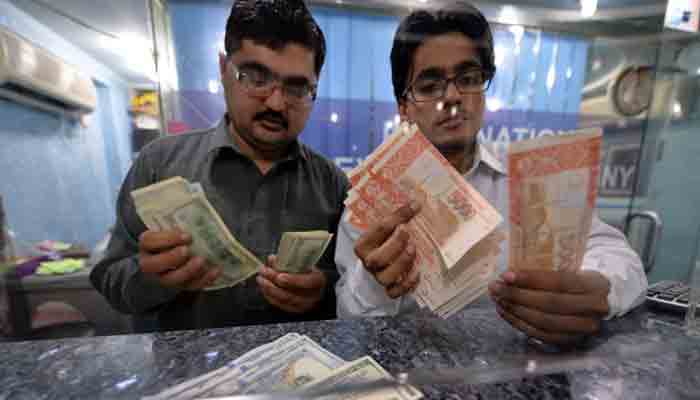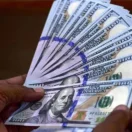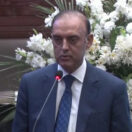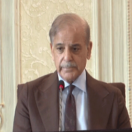By Abid Qaiyum Suleri
Published in The News on December 30, 2021
Before recapping the state of the economy in 2021, let us recall the World Economic Forum’s Global Crisis Report which was released in January this year.
The report highlighted that during 2021 the world could face the following risks and threats: asset bubble burst, price instability, debt crises, commodity shocks, livelihood crisis, extreme weather, weapons of mass destruction (WMD), digital power concentration, and digital inequality. A year down the road, one finds that besides the Delta variant of Covid-19, the world economies were also haunted by most of the risks identified by the WEF.
The good news is that Pakistan achieved decent economic growth in 2021 despite those risks. Thanks to the National Command Operation Center’s well-coordinated vaccination campaign, Pakistan survived the devastating effects of the Delta variant which caused havoc in India.
Amidst fear of the spread of the Delta variant in May 2021, many in Pakistan doubted the GDP growth numbers provided by the National Accounts Committee. However, the production statistics for wheat, rice, sugarcane, maize; the growth in large-scale manufacturing and in the services sector proved that GDP growth of 3.94 percent was a realistic figure.
During the outgoing year, an increase was observed not only in the yield of major crops but also in remittances, value of exports, FBR revenues, PSDP authorisation, agricultural credit uptake, credit to private sector, and incorporation of new companies. There was a decrease, and hence an improvement in fiscal deficit and debt-to-GDP ratio.
However, the year also saw an increase in demand for commodities, core price inflation, value of imports, current account deficit, value of US dollar against rupee, and policy rate (markup rate). The impact of increased inflation, (im)balance of payments, and depreciation of the rupee on general publicsentiments proved larger than the cumulative effect of the economic achievements – and hence masked many of those achievements.
Earlier, in June 2021, the federal government presented a ‘business friendly’, ‘growth-focused’ budget. The budget not only spurred positive sentiments but also increased demand. The demand of consumer items, raw material, machinery and petroleum products led to further imports and accumulation of current account deficit which consequently led to depreciation of the rupee followed by an increase in policy rate.
Globally commodity prices increased due to increased demand triggered by a faster than expected economic recovery from Covid-19, disrupted supply chains, increase in cost of shipments, and a ripple effect of the hike in energy prices.
In the last one year (from November 2020 to November 2021), the global prices of crude oil increased by 87 percent, European natural gas by 430 percent, soybean oil by 47.8 percent, palm oil by 46.8 percent, sugar by 38.7 percent, and wheat by 34.9 percent. During this period, the Pak rupee slid down from 160 rupees per US dollar to 178 rupees, turning expensive imports further expensive.
The government of Pakistan absorbed most of the price hike of gas, and more than half of the price hike in crude oil. Petrol prices were increased by 41 percent and high-speed diesel prices by 37 percent respectively against a global increase of 87 percent. Yet, this subsidised increase had a ripple effect on other types of inflation, especially on cost of energy generation.
Non-recovery of cost of energy generation is contributing to accumulation of energy circular debt (ECD), which totalled Rs2.3 trillion in 2021.
Non-resolution of the ECD is one of the factors that has stalled our ongoing Extended Fund Facility programme (EFF) with the IMF since March 2021, when Pakistan received $500 million from the IMF. The fate of the EFF is linked to the amendment in the finance bill (mini budget) that needs to be approved by the first of week of January 2022, well in time for the IMF executive board meeting in mid-January. During the year 2021, most of the discussion (read: criticism) around the IMF and Pakistan’s relations revolved around two bills that no one has seen yet – the proposed bill to give autonomy to the State Bank of Pakistan, and the proposed mini-budget.
Emerging regional dynamics, especially formation of the Taliban government in Afghanistan, also affected Pakistan’s economy in 2021. How? Let me explain.
I invite you to go through the editorials of major papers in the US after Kabul was surrendered to the Taliban in August 2021. Most of them, using Pakistan as a scapegoat for failure of US policy in Afghanistan, advocated that Pakistan should be punished. And that the US should not let it graduate from the Financial Action Task Force (FATF) grey list and should ensure that the IMF does not show any leniency towards Pakistan.
Resultantly, Pakistan, despite completing almost all action points set by the FATF, remained in its grey list. All this while the IMF is showing no leniency to Pakistan on its pre-conditionalities for release of the next tranche under the EFF.
Here it must be mentioned that Pakistan did receive $2.75 billion from the IMF in August 2021. But those funds were provided under the IMF’s new special drawing rights (SDR) allocation to back its member countries combating the pandemic.
The Afghan situation also increased demand for US dollars in Pakistan and hence contributed to the depreciation of the rupee. According to the finance minister, at one point, almost $15 million were being smuggled to Afghanistan daily. To contain domestic hoarding of dollars and to check flight of dollars from Pakistan, the State Bank of Pakistan in December 2021 defined an upper limit for daily and annual purchase of dollars.
To protect those who could not recover from internal and external economic shocks, the government did focus on strengthening and enhancing social protection measures during 2021. The fund allocation for the Ehsaas program was not only increased but those funds were released too. Likewise, universal health coverage through the Sehat Sahulat Program and the Kissan Card, which is provision of subsidy for farm inputs, are being rolled out in collaboration with the provincial governments. An ambitious Kamyab Pakistan Program (loans on easy terms and easy instalments for youth, farmers, and small entrepreneurs etc) has also been initiated and is being scaled up. Likewise, food subsidies are being given to Ehsaas beneficiaries through registered shops.
It is said that ‘stagflation’ (a simultaneous increase in inflation and stagnation of economic output) is worse than inflation. Like most other economies, Pakistan’s economic recovery in 2021 too remained uneven, or ‘K-shaped’. Some sectors recovered faster whereas others are catching up at a slow or much slower pace. However, our economic output is not stagnant at all.
So let us say goodbye to 2021 on an optimistic note – with a hope that policy measures to uplift those who are still struggling to recover from economic shocks would work in the year 2022 and that this next year will bring peace, health, and prosperity for everyone. Have a Covid-safe new year.






